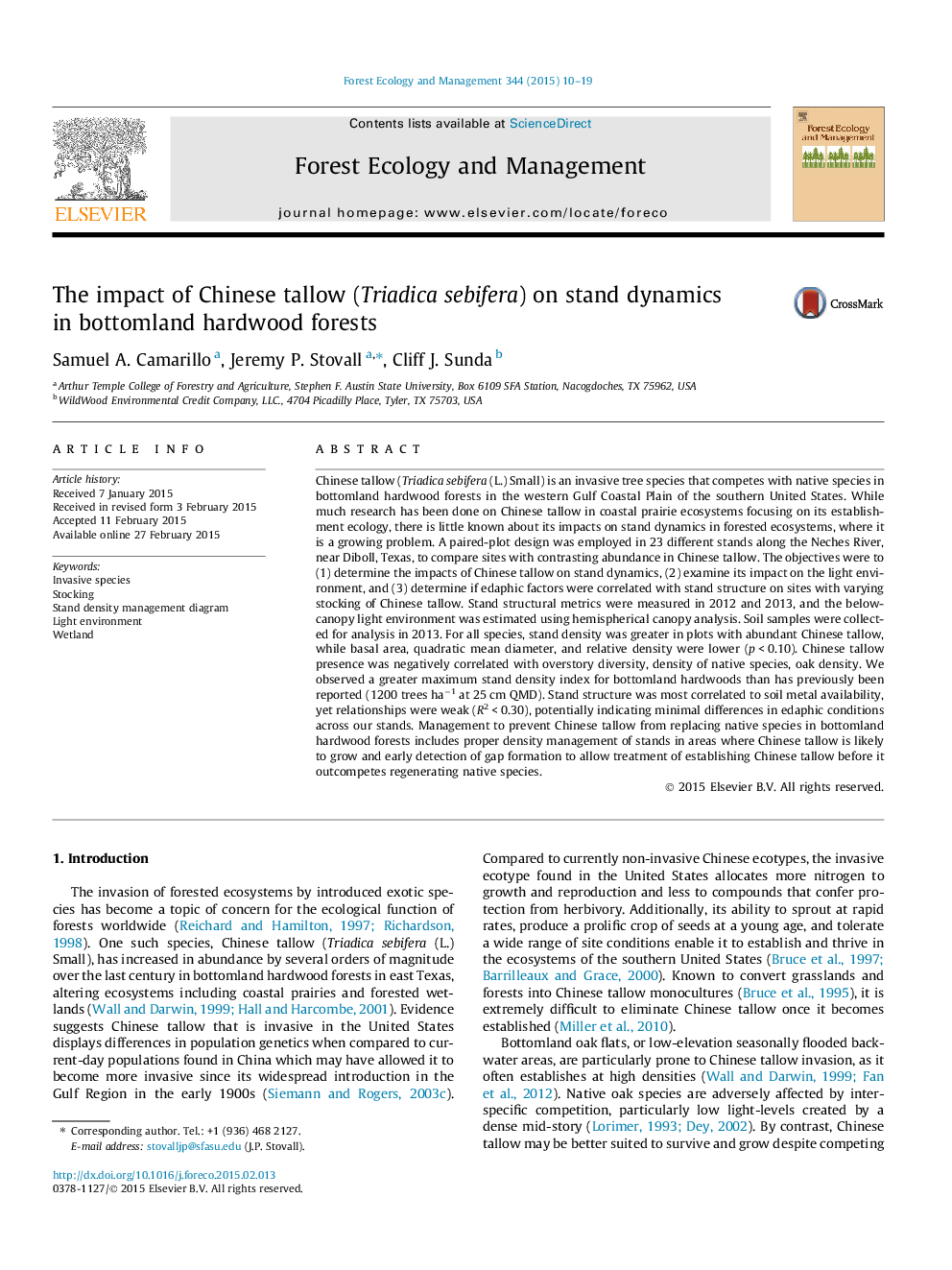| کد مقاله | کد نشریه | سال انتشار | مقاله انگلیسی | نسخه تمام متن |
|---|---|---|---|---|
| 86312 | 159178 | 2015 | 10 صفحه PDF | دانلود رایگان |

• Tallow abundance is correlated with lower overall stand stocking in bottomlands.
• Tallow abundance is correlated with lower stocking of native species in bottomlands.
• Tallow-dense areas have less overstory diversity but similar understory diversity.
• Tallow presence did not alter below-canopy light quantity or gap fraction.
• Soil factors did not correlate with tallow abundance in our study area.
Chinese tallow (Triadica sebifera (L.) Small) is an invasive tree species that competes with native species in bottomland hardwood forests in the western Gulf Coastal Plain of the southern United States. While much research has been done on Chinese tallow in coastal prairie ecosystems focusing on its establishment ecology, there is little known about its impacts on stand dynamics in forested ecosystems, where it is a growing problem. A paired-plot design was employed in 23 different stands along the Neches River, near Diboll, Texas, to compare sites with contrasting abundance in Chinese tallow. The objectives were to (1) determine the impacts of Chinese tallow on stand dynamics, (2) examine its impact on the light environment, and (3) determine if edaphic factors were correlated with stand structure on sites with varying stocking of Chinese tallow. Stand structural metrics were measured in 2012 and 2013, and the below-canopy light environment was estimated using hemispherical canopy analysis. Soil samples were collected for analysis in 2013. For all species, stand density was greater in plots with abundant Chinese tallow, while basal area, quadratic mean diameter, and relative density were lower (p < 0.10). Chinese tallow presence was negatively correlated with overstory diversity, density of native species, oak density. We observed a greater maximum stand density index for bottomland hardwoods than has previously been reported (1200 trees ha−1 at 25 cm QMD). Stand structure was most correlated to soil metal availability, yet relationships were weak (R2 < 0.30), potentially indicating minimal differences in edaphic conditions across our stands. Management to prevent Chinese tallow from replacing native species in bottomland hardwood forests includes proper density management of stands in areas where Chinese tallow is likely to grow and early detection of gap formation to allow treatment of establishing Chinese tallow before it outcompetes regenerating native species.
Journal: Forest Ecology and Management - Volume 344, 15 May 2015, Pages 10–19